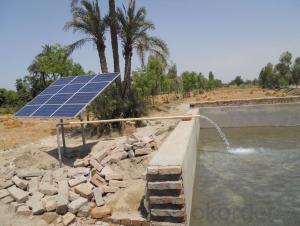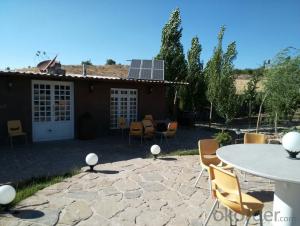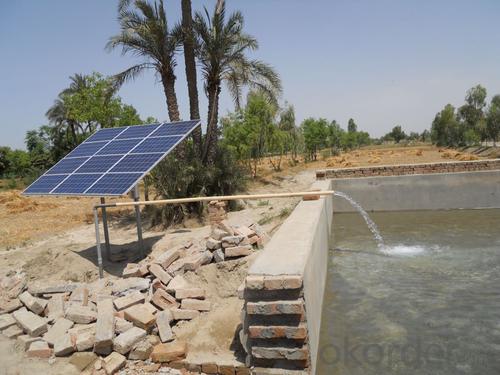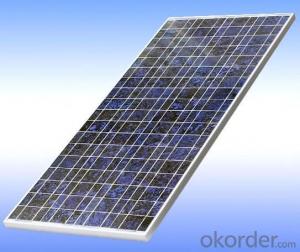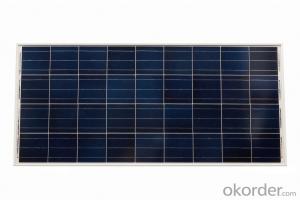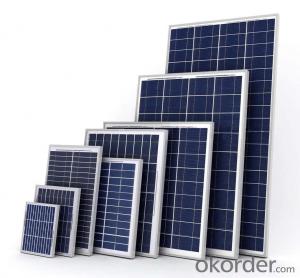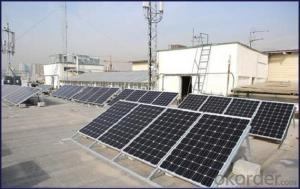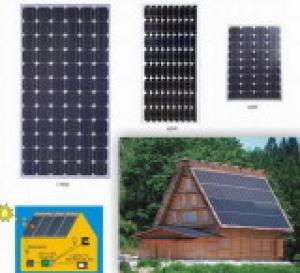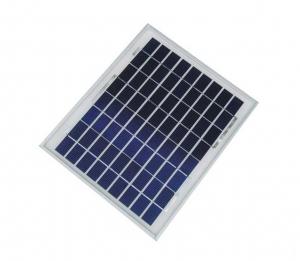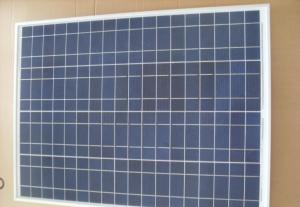Panasonic Solar Panels 400w - CE and TUV Approved High Efficiency 20W Poly Solar Panel
- Loading Port:
- Shanghai
- Payment Terms:
- TT OR LC
- Min Order Qty:
- 10000 watt
- Supply Capability:
- 20000000 watt/month
OKorder Service Pledge
OKorder Financial Service
You Might Also Like
Specification
Product Description:
1.Structure of Polycrystalline Silicon Solar Panel
I. High efficiency crystalline silicon solar cell. Even if under the weak light, the solar module can produce maximum power output.
II. Tempered glass (toughened glass): Anti-reflecting coating and high transmission rate glass increase the power output and mechanical strength of solar module.
III. EVA and TPT: Using high quality EVA and TPT to prevent destroying and water.
IV. AI frame: Without screw, rner connection. 6 holes on the frame can be installed easily.
V. Junction box: Multi function junction box with water proof.
VI. Long lifetime: ≥25 years; Less power decrease.
VII. Good performance of preventing from atrocious weather such as wind and hails.
VIII. Resisting moisture and etching effectively, not effected by geology.
IX. The certificate issued by international authority: UL, TUV, IEC, CE.
2.Characteristics
1)Manufactured according to international quality and Environment Management
System (ISO9001, ISO14001)
2)High efficiency crystalline silicon solar cells
3)High transmission Iow iron tempered glass, strong mechanical resistance
4)Anti-ageing EVA and excellent anti-climate back sheet
5)Anodized aluminum frame improves load resistance capabilities for heavy wind loads.
6)Standard waterproof junction box
7)High endurance to different weather
8)Good and friendly package with less transportation and storage space.
3.Warranty
1)10 years limited manufacturing warranty
2)10 years for 90% of warranted minimum power
3)25 years for 80% of warranted minimum power
4.The Pictures of Solar Panels
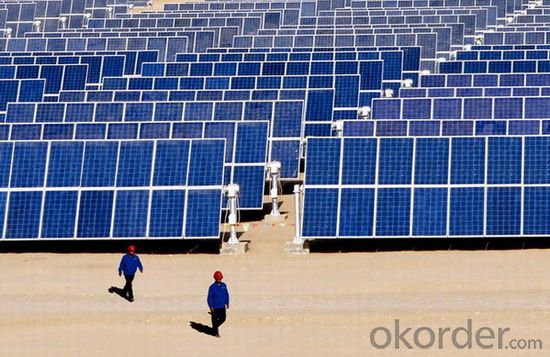
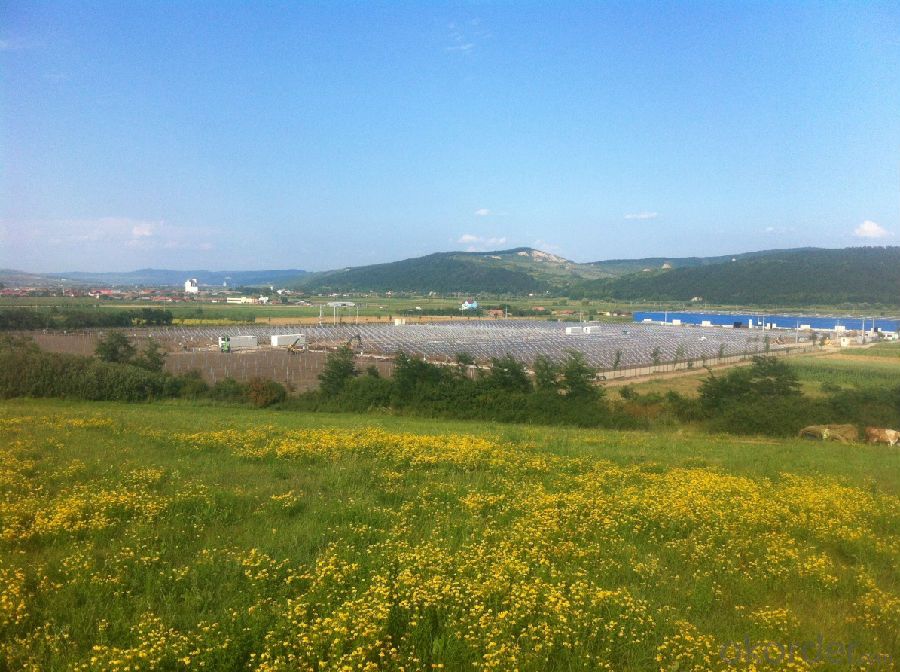
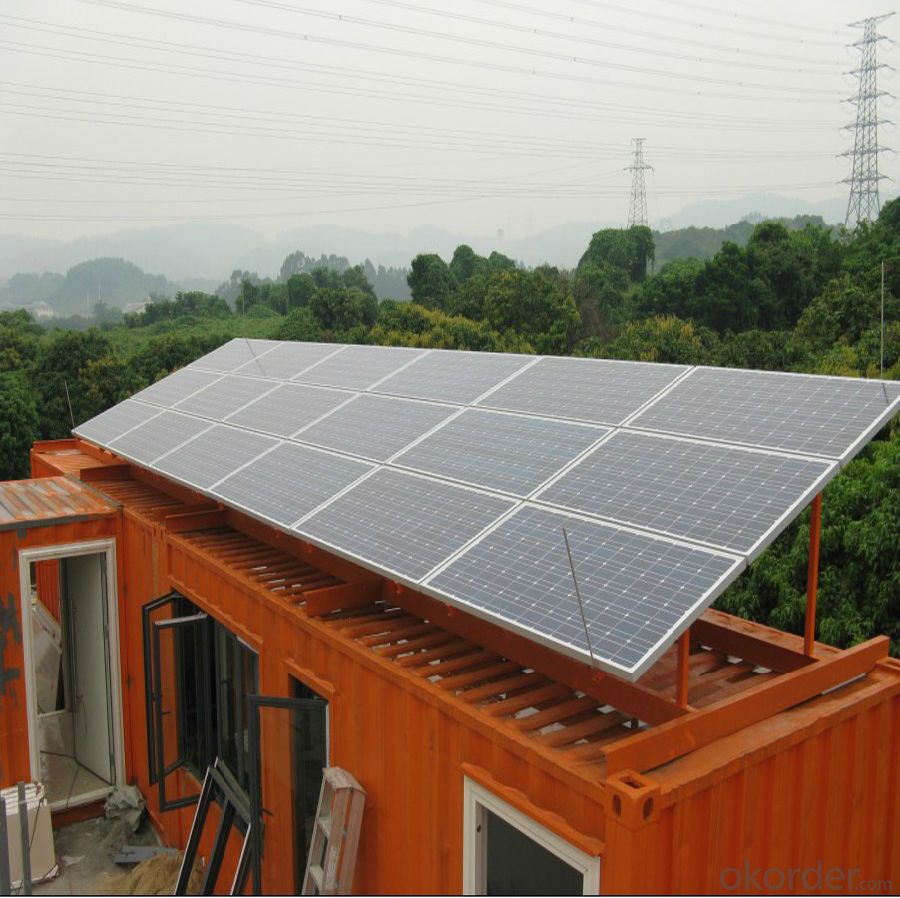
5. Production Flow

6. Packing Details
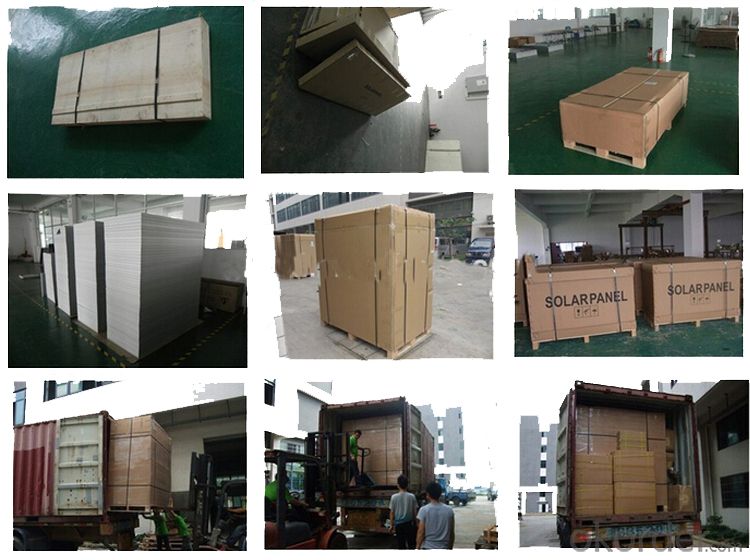
7. Use For
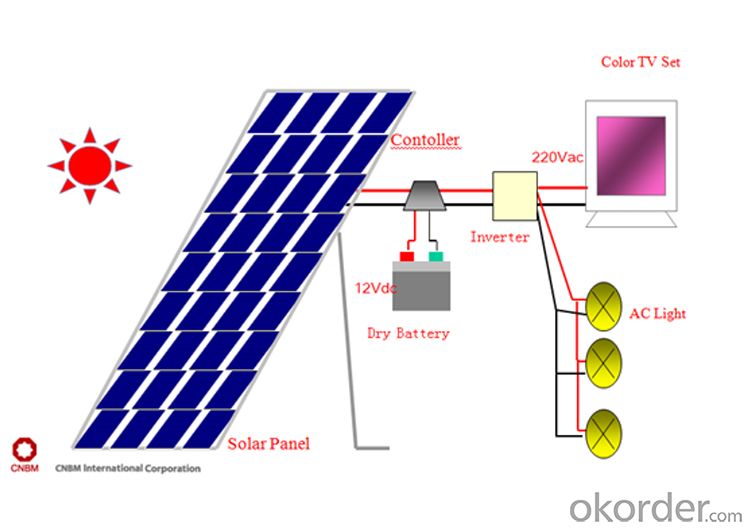
- Q: What is the principle and structure of solar panels?
- solar panels: solar panels is the core of solar power generation system, solar power system is the highest value of the part. Its role is to convert the sun's radiation capacity into electricity, or sent to the battery to store, or to promote the load work.
- Q: Does anyone know how I would go about hooking up the air conditioners in my house to solar panels? I would want just the air conditioners to be powered by solar energy. How could I hook it up where the panels can absorb energy from the sun during the day, and save and store the energy so I can run the air conditioners at night? I really feel that in the long run, this would save a lot of money with the energy bill. It's the use of the air conditioners that drive up the bill. Is this idea feasible? Is it also possible to have some sort of hybrid system where I can switch from solar to my regular local energy source when I want to?
- There's no need to connect only the A/C to solar, nor is there a need to use batteries. Both of those problems are solved with grid-tied solar. The solar electricity system works alongside your regular, and the A/C just plugs in normally. You never need to worry about switching. During the day, if the A/C is drawing power, the solar goes into that, reducing your draw from the electric company. If the solar generates more than the A/C needs, the meter is driven backwards. At night, the meter runs forward again. For example, the meter may read 5000 in the morning. By evening, maybe it reads 4975. At night, it creeps back up to 5005. When the meter reader comes, you would be billed for only 5 kWh. That's the general idea. Also, consider whether you can insulate your home more, and whether you might want to change out your air conditioners for new, DC inverter mini-split units. Those can use a fraction of the electricity per BTU of regular air conditioners.
- Q: I would like to connect a solar panel to a small fan. I am not sure as to what is needed to actually quot;connectthe two together. Any help is appreciated.
- Panels are rated nominally, and you can look at your fan to see what the ratings for the fam are to determine sizing of the panel. Current multiplied by the volts (rated) gives you the wattage of the motor- just use this as a guide for sizing the panel. You do want a little more power from the panel than the motor draws for purposes of starting the motor and for having the fan operate at lower sun angles as well. You can add a battery if you chose, but it is not a requirement. Just treat the leads of the panel like those of a battery red (+) and black (-) just connect those to the fan, if you match color for color, no problem. If the markings are not present and no wires are on the fan, try it one way, if it is the wrong way- reverse them. AC operated fans will require an inverter to convert the DC to AC. These draw a certain amount of power as well. In general the same rules of thumb apply. It is just easier though to stick with a DC motor.
- Q: i want to know how to hook up solar panels to my existing power. all i can find on the internet is to use batteries and a inverter. but i want to use all of my existing lights and outlets off of the solar energy. i have heard that you can actually turn the meter backwards and use supplied power when needed. thats what i want to do and is it possible to do myself and if so, how?
- Hooking up without batteries is actually the most common way to do it, but it's a non-trivial project, and dangerous if you don't know what you're doing. There is a device called a grid-tied inverter - that performs the task of putting energy back into the power grid. The reason you don't see homemade panels being hooked to the grid is because the power company's permission is required, and they will not grant it unless you meet building codes, and those codes require parts with at least a UL listing. No homemade panels would quality.
- Q: I have an electric bicycle that I travel to work by, pulling a modified child carrying trailer that holds two 2 volt deep cycle batteries in series to power the 24 volt bike motor. I'm thinking about adding a 50 watt solar panel (or larger depending on the room I can make available) to charge while I'm at work and to provide some extra juice while on my more distant travels.Can I get a solar panel to charge them while they're connected the way they are: in series? Does charging work that way?I've read that in order to charge the 24 volt battery setup (if the answer to the Q above is yes), the output from my solar panel would need to be a little more than 24 volts. Is this true? If so, how many volts?Since the bike is supposed to be powered at 24 volts and I have an x-volt (x gt; 24v) solar panel connected to it, will this cause any damage to the controller or other components while running them?Will it help supply power even while the motor is being run?Thanks.
- Yes, you have it right you need two 2V panels wired in series to give 24V to charge a 24 volt system. But along with the 24V you also want some amperage, otherwise it takes forever to charge. Most of the little chargers are called trickle charges because they only have an amp or two. If you had two 25 watt solar panels putting out 24V you have : watts = volts * amps 50 watt = 24V * x amps x = 2 amps If your battery is say 50 amp hours of storage, then if you are putting in 2 amps it will take you 25 hours of sunlight to power it back up from a dead battery. So the charge time depends on how many amps you are putting in there at 24V A car battery charger typically charges at 0 amps at 2V, so 2 * 0 = 20 watts of power going in there So if you go solar make sure to use a charge controller and a big enough panel to get close to 00 watts for any decent recharge time. The charge controller makes sure that the battery only gets voltage going one way and it least 24V. So if the sun went behind some clouds and the voltage dropped to 20V, the controller shuts off the current until the voltage equals 24V or more
- Q: I have 2 20 watt Solar panel. I have it hooked up to solar controller and batteries to inverter. Am trying to figure out how much watts am getting. I found the voltage but how do I find the amp reading on a mutimeter?
- It is possible your meter does not have the capacity to safely measure more than 300 milliamps which is too small to measure current output from solar panels. Assuming no losses in the system or components, if your meter does not have the capacity to measure 0 Amps, you will need to get one that does. Analogs are better than digitial for this. Most often the 0 Amp circuit of the meter has a discrete positive plug location for the positive test lead. Most have a common ground connection with the rest of the meter functions. If you are measuring current at the battery in the charge mode- Negative lead of meter goes to positive terminal of battery and positive lead of meter goes to the cable that was connected to the positive terminal of the battery. Since the Wattage is a nominal measurement, if you measure between the panel and controller, take measurement on one leg of the panel, as you want to measure the current with the loaded active circuit. Meter is oriented the same way as the measurement at the battery would be made above only this time the meter is between the panel and controller. At peak solar conditions, expect current to be measured at 2.5 to3 Amps or more per panel. Under optimal conditions your panel will have higher output than their ratings indicate. Open circuit can be close to 20 volts. Never short circuit the output of the solar panels. It is volts multiplied by amps that gives you Watts.
- Q: I want to install solar panels in my roof and most installers don't recommend any particular brand. Do you have experience with any particular brand that has worked for you or anybody you know? Does the brand of the panel make a difference?
- You don't say what you are doing. Are you trying to get electricity from them and need solar photovoltaic panels or are you trying to run a heating or hot water system and need solar thermal panels. It is unfortunate that both of these are known as solar panels as they are really two entirely different designs. Currently the solar thermal panels are more efficient and therefore have a quicker pay back period usually measured in lower single digit years while the photovoltaic panels have paybacks that are sometimes more than double that unless you figure in increased property values and state and federal subsidiaries and tax credits where available. Edit: Recent advances make any current investment in photovoltaic panels likely to be obsolete in 5 years. Still someone has to be on the cutting edge. Two currently available technologies are concentrating the sun's rays within the collector on a much small chip area.2 This improves the efficiency and lowers the cost as concentrators are cheaper than chips. The other option is newer chips that accept a wider spectrum of solar energy.3 This has the potential advantage of producing more energy on cloudy days. This may not be so important in your situation. Balanced against cutting edge technology will be the possibility of getting older panels at a less expensive cost. The bottem line will always be pay back period. More panels at a lower efficiency and cheaper price will be just as good as high efficiency at a higher price if the numbers work out. 4 Between two answers here you now have a criteria for selection and some recomendations. Good luck with your project.
- Q: I need to have more information about what are solar panels. will you help me?
- If you want to see one up close find a solar powered calculator or a solar powered garden light at your local supermarket, they all have solar panels on them. The bigger the panel the more power, that's why the panels on the ISS are as big as a garden, they produce thousands of watts
- Q: Can solar panels be used for powering electric gates?
- Yes, solar panels can be used to power electric gates. Solar panels convert sunlight into electricity, which can be stored in batteries or directly used to power various devices, including electric gates. This allows for a sustainable and environmentally friendly way to operate electric gates without relying on traditional electrical grids.
- Q: Can anyone give me some info on how to figure how many panels needed for a 0 volt 2 amp pool motor. Thanks/ Run 5 hours a day
- You okorder /
Send your message to us
Panasonic Solar Panels 400w - CE and TUV Approved High Efficiency 20W Poly Solar Panel
- Loading Port:
- Shanghai
- Payment Terms:
- TT OR LC
- Min Order Qty:
- 10000 watt
- Supply Capability:
- 20000000 watt/month
OKorder Service Pledge
OKorder Financial Service
Similar products
Hot products
Hot Searches
Related keywords
